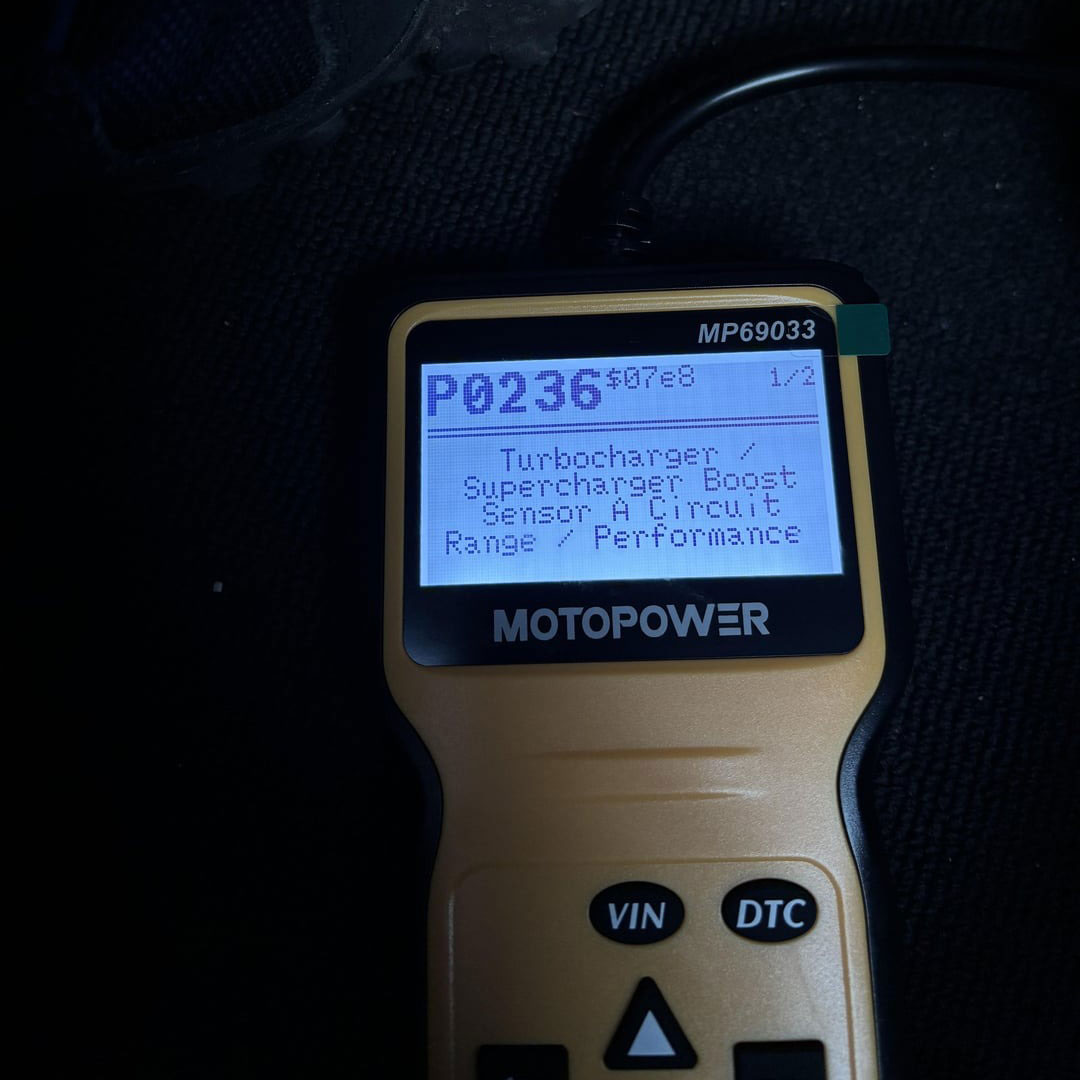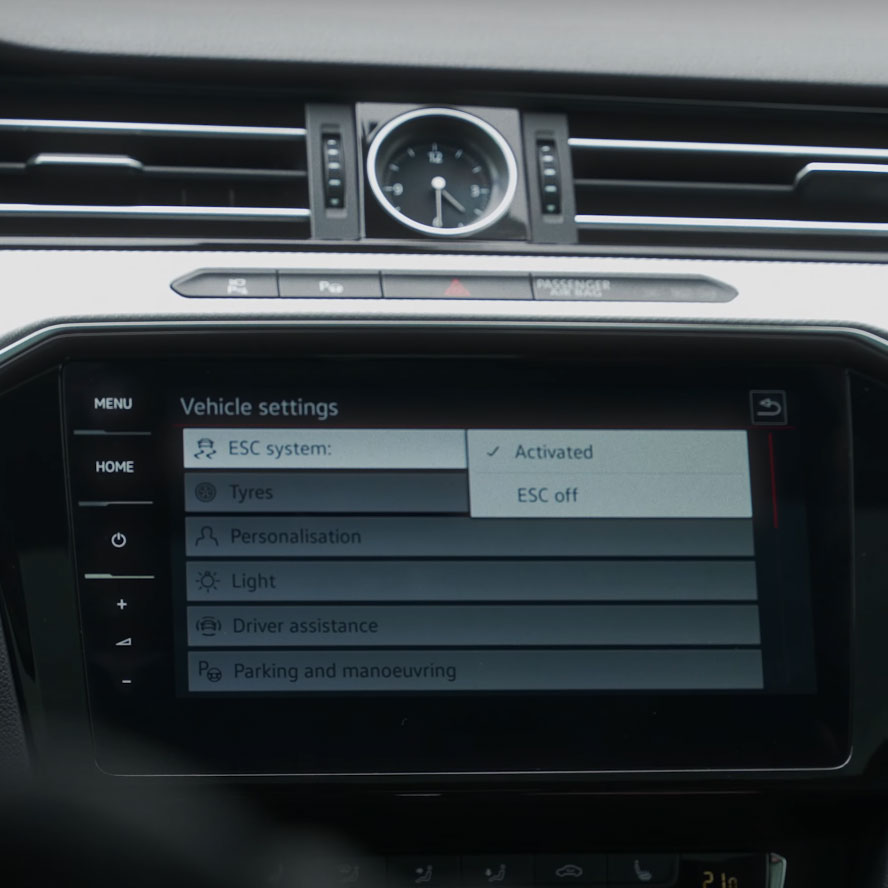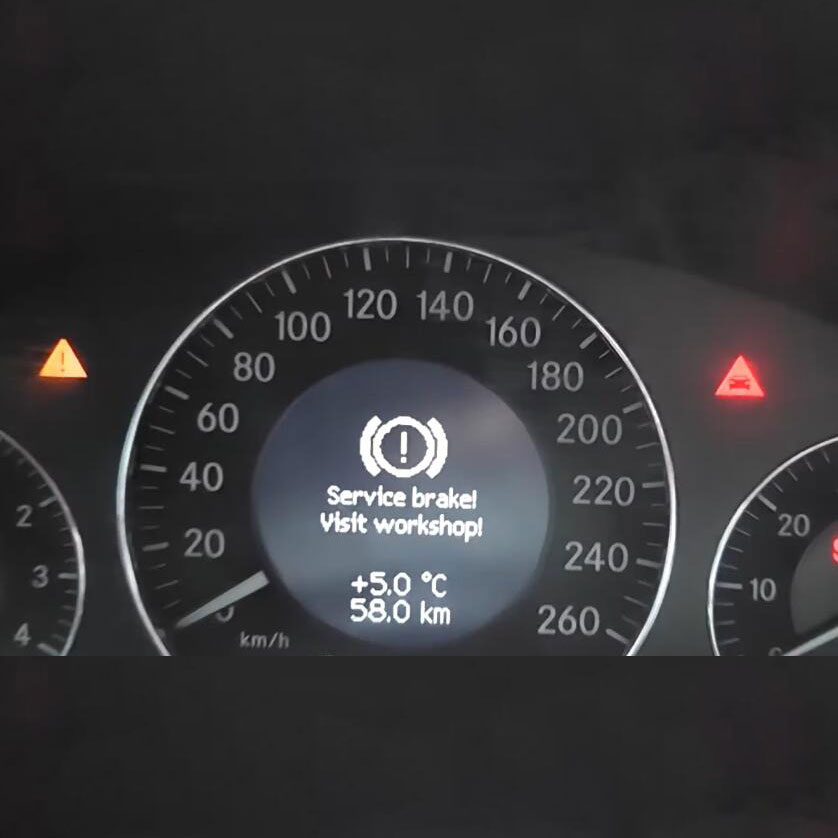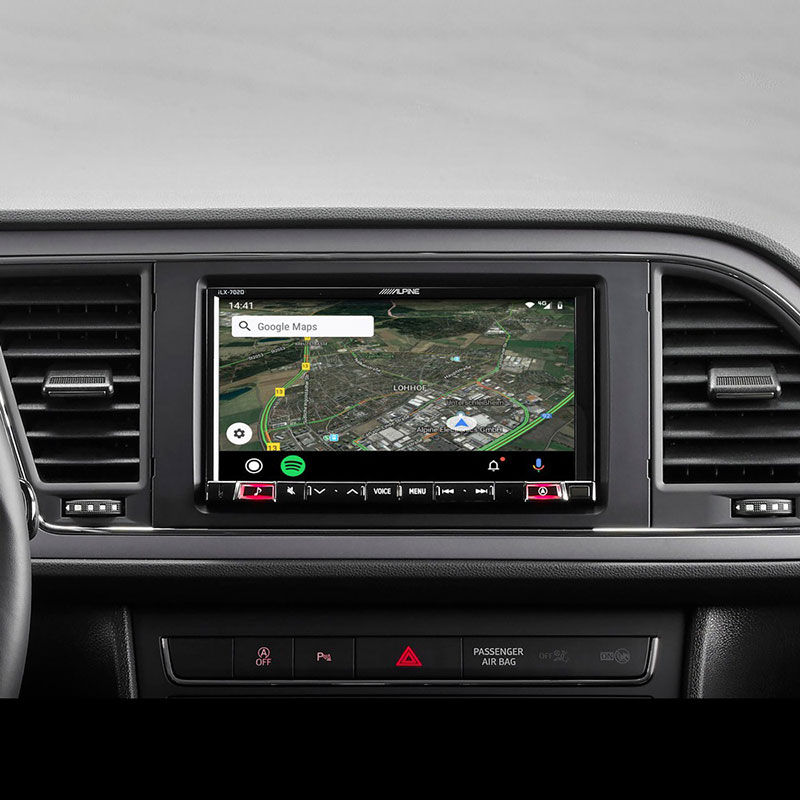
Audi DTC P006800: Troubleshooting and Solutions for Airflow Issues
Is your Audi displaying the dreaded DTC P006800 code? AutoExplain is here to guide you through understanding, diagnosing, and resolving this common airflow issue, ensuring your vehicle runs smoothly and efficiently.
1. What Does Audi Dtc P006800 Actually Mean?
The Audi Diagnostic Trouble Code (DTC) P006800 signifies a correlation problem between the Manifold Absolute Pressure (MAP) sensor and the Mass Air Flow (MAF) sensor. In simpler terms, the engine control unit (ECU) detects a disagreement in the readings from these two sensors, indicating a potential issue with the air intake system. According to a study by the ASE Education Foundation, accurate sensor readings are crucial for optimal engine performance and fuel efficiency. When the ECU receives conflicting data, it cannot properly regulate the air-fuel mixture, leading to various drivability problems. Resolving this issue promptly is vital to prevent potential engine damage and ensure your Audi operates at its best.
To understand the core of the P006800 error code, we need to look at the two key components involved:
- Mass Air Flow (MAF) Sensor: This sensor measures the amount of air entering the engine. The ECU uses this information to calculate the correct amount of fuel to inject.
- Manifold Absolute Pressure (MAP) Sensor: The MAP sensor measures the pressure inside the intake manifold. This data helps the ECU adjust the air-fuel mixture based on engine load and altitude.
When these two sensors provide significantly different readings, the ECU triggers the P006800 code. This discrepancy signals a problem that needs attention. According to SEMA, proper diagnosis and repair are essential to maintaining vehicle performance and preventing further issues.
2. What are the common Symptoms of an Audi with a P006800 Code?
Recognizing the symptoms associated with the P006800 code is essential for early detection and resolution. Here are some common signs that your Audi may be experiencing this issue:
- Rough Idle: The engine may idle unevenly, causing vibrations and a shaky feeling.
- Poor Acceleration: The vehicle may struggle to accelerate, feeling sluggish and unresponsive.
- Stalling: The engine may stall unexpectedly, especially at low speeds or when idling.
- Reduced Fuel Economy: You may notice a significant decrease in your car’s fuel efficiency.
- Check Engine Light: The check engine light will illuminate on the dashboard, indicating a problem.
- Hesitation: The engine may hesitate or stumble during acceleration.
- Black Smoke from Exhaust: In some cases, you may observe black smoke coming from the exhaust pipe, indicating a rich air-fuel mixture.
These symptoms can vary in severity depending on the underlying cause of the P006800 code. Addressing these issues promptly can prevent further damage and ensure your Audi’s optimal performance. If you notice any of these symptoms, it’s crucial to diagnose and resolve the problem as soon as possible. AutoExplain offers advanced diagnostic tools and remote programming services to help you pinpoint the exact cause and implement the necessary repairs.
3. What are the Potential Causes of the P006800 Error Code in Audis?
The P006800 error code can stem from a variety of issues within your Audi’s air intake system. Identifying the root cause is essential for effective repair. Here are some potential culprits:
- Faulty MAF Sensor: A malfunctioning MAF sensor can provide inaccurate readings, leading to the P006800 code.
- Faulty MAP Sensor: Similarly, a faulty MAP sensor can send incorrect data to the ECU, triggering the error code.
- Vacuum Leaks: Leaks in the vacuum lines can disrupt the air intake system, causing discrepancies in sensor readings.
- Dirty Air Filter: A clogged air filter restricts airflow, affecting the performance of both the MAF and MAP sensors.
- Intake Manifold Leaks: Leaks in the intake manifold can alter the pressure readings, leading to the P006800 code.
- Throttle Body Issues: A dirty or malfunctioning throttle body can affect airflow, causing sensor discrepancies.
- Wiring Problems: Damaged or corroded wiring to the MAF or MAP sensors can disrupt their signals.
- ECU Malfunction: In rare cases, a malfunctioning ECU can misinterpret sensor data, triggering the P006800 code.
- Clogged PCV Valve: A clogged Positive Crankcase Ventilation (PCV) valve can cause vacuum leaks and affect sensor readings.
Diagnosing the exact cause of the P006800 code requires a systematic approach. AutoExplain provides comprehensive diagnostic services and remote programming to help you identify and resolve the underlying issue. Our expertise ensures that you can accurately pinpoint the problem and implement the necessary repairs.
4. Step-by-Step Diagnostic Process for P006800
Diagnosing the P006800 error code requires a systematic approach to identify the root cause. Follow these steps to effectively troubleshoot the issue:
Step 1: Preliminary Inspection:
- Begin by visually inspecting the air intake system for any obvious damage, such as cracked hoses or loose connections.
- Check the air filter to ensure it is clean and not clogged.
- Examine the wiring and connectors for the MAF and MAP sensors for any signs of damage or corrosion.
Step 2: Scan for Error Codes:
- Use an OBD-II scanner to read and record all stored error codes.
- Clear the P006800 code and any related codes, then take the vehicle for a test drive to see if the code returns.
Step 3: MAF Sensor Testing:
- With the engine running, use a multimeter to check the MAF sensor’s voltage output.
- Compare the readings to the manufacturer’s specifications to determine if the sensor is functioning correctly.
- You can also use a scan tool to monitor the MAF sensor’s data stream in real-time.
Step 4: MAP Sensor Testing:
- Use a vacuum gauge to check the MAP sensor’s vacuum reading at idle.
- Compare the reading to the manufacturer’s specifications to determine if the sensor is functioning correctly.
- You can also use a scan tool to monitor the MAP sensor’s data stream in real-time.
Step 5: Vacuum Leak Testing:
- Use a smoke machine to introduce smoke into the intake system and identify any vacuum leaks.
- Pay close attention to vacuum lines, intake manifold gaskets, and throttle body seals.
Step 6: Component Testing and Replacement:
- If either the MAF or MAP sensor fails the testing, replace it with a new, OEM-quality sensor.
- Repair any identified vacuum leaks by replacing damaged hoses or gaskets.
Step 7: Final Verification:
- After completing the repairs, clear the error codes and take the vehicle for a test drive.
- Use the OBD-II scanner to monitor the MAF and MAP sensor readings and ensure they are within the correct range.
By following these steps, you can systematically diagnose and resolve the P006800 error code in your Audi. AutoExplain provides expert guidance and advanced diagnostic tools to streamline this process and ensure accurate results.
5. Detailed Repair Procedures for Audi P006800
Once you’ve diagnosed the cause of the P006800 code, it’s time to implement the necessary repairs. Here’s a detailed guide to help you through the process:
5.1 Replacing a Faulty MAF Sensor
- Tools Needed: Screwdrivers, socket set, new MAF sensor.
- Procedure:
- Disconnect the negative battery terminal.
- Locate the MAF sensor, typically found in the air intake tube between the air filter and the throttle body.
- Disconnect the electrical connector from the MAF sensor.
- Loosen the clamps or screws securing the MAF sensor to the air intake tube.
- Remove the old MAF sensor and install the new one, ensuring it is properly oriented.
- Tighten the clamps or screws to secure the new MAF sensor.
- Reconnect the electrical connector.
- Reconnect the negative battery terminal.
- Clear the error codes and perform a test drive to verify the repair.
Alt text: Replacing the mass airflow sensor with a screwdriver and new sensor for accurate air intake measurements.
5.2 Replacing a Faulty MAP Sensor
- Tools Needed: Socket set, new MAP sensor.
- Procedure:
- Disconnect the negative battery terminal.
- Locate the MAP sensor, typically found on the intake manifold.
- Disconnect the electrical connector from the MAP sensor.
- Remove the bolt or screws securing the MAP sensor to the intake manifold.
- Remove the old MAP sensor and install the new one.
- Tighten the bolt or screws to secure the new MAP sensor.
- Reconnect the electrical connector.
- Reconnect the negative battery terminal.
- Clear the error codes and perform a test drive to verify the repair.
5.3 Fixing Vacuum Leaks
- Tools Needed: Smoke machine, vacuum gauge, replacement vacuum lines or gaskets.
- Procedure:
- Use a smoke machine to identify the location of the vacuum leak.
- Once the leak is identified, disconnect the vacuum line or component causing the leak.
- Replace the damaged vacuum line or gasket with a new one.
- Ensure all connections are secure and properly tightened.
- Use a vacuum gauge to verify that the vacuum reading is within the manufacturer’s specifications.
- Clear the error codes and perform a test drive to verify the repair.
Alt text: Diagnosing vacuum leaks in Audi’s intake system using a smoke machine to identify faulty components.
5.4 Cleaning the Throttle Body
- Tools Needed: Throttle body cleaner, soft cloth, screwdriver.
- Procedure:
- Disconnect the negative battery terminal.
- Locate the throttle body, typically found between the air intake tube and the intake manifold.
- Disconnect the electrical connector from the throttle body.
- Remove the air intake tube from the throttle body.
- Spray throttle body cleaner onto a soft cloth and wipe the throttle plate and bore to remove any carbon buildup.
- Reassemble the throttle body and reconnect the electrical connector and air intake tube.
- Reconnect the negative battery terminal.
- Clear the error codes and perform a throttle body adaptation reset using a scan tool if necessary.
5.5 Cleaning or Replacing the Air Filter
- Tools Needed: Screwdriver, new air filter (if replacing).
- Procedure:
- Locate the air filter housing, typically found near the engine compartment.
- Open the air filter housing and remove the old air filter.
- If cleaning, gently tap the air filter to remove any loose debris or use compressed air to blow it out.
- If replacing, install the new air filter into the housing.
- Close the air filter housing and secure it with the screws or clips.
By following these detailed repair procedures, you can effectively address the underlying causes of the P006800 error code in your Audi. AutoExplain provides expert guidance and remote programming services to support you throughout the repair process.
6. Tools and Equipment Needed
Having the right tools and equipment is essential for accurately diagnosing and repairing the P006800 error code. Here’s a list of the necessary items:
| Tool/Equipment | Description |
|---|---|
| OBD-II Scanner | Reads and clears diagnostic trouble codes. |
| Multimeter | Measures voltage, current, and resistance for electrical testing. |
| Vacuum Gauge | Measures vacuum pressure to identify leaks. |
| Smoke Machine | Detects vacuum leaks in the intake system. |
| Socket Set | Used for removing and installing sensors and components. |
| Screwdrivers | Used for various tasks, including removing and installing screws. |
| Throttle Body Cleaner | Cleans carbon buildup from the throttle body. |
| Air Filter | Replacement air filter for routine maintenance. |
| Replacement Sensors | New MAF and MAP sensors for replacement if necessary. |
| Scan Tool with Data Log | Provides real-time sensor data and advanced diagnostic capabilities. |
| Wiring Diagram | Helps trace and troubleshoot electrical circuits. |
Investing in quality tools and equipment will not only make the diagnostic and repair process easier but also ensure accurate and reliable results. AutoExplain recommends using professional-grade tools to ensure the highest level of precision and safety.
7. Common Mistakes to Avoid During Diagnosis
When diagnosing the P006800 error code, it’s crucial to avoid common mistakes that can lead to misdiagnosis and wasted time. Here are some pitfalls to watch out for:
- Ignoring Basic Checks: Overlooking simple issues like a dirty air filter or loose connections can lead to unnecessary complex diagnoses.
- Replacing Sensors Without Testing: Replacing the MAF or MAP sensor without proper testing can be costly and ineffective if the sensor is not the actual problem.
- Neglecting Vacuum Leaks: Vacuum leaks can mimic sensor issues, so it’s essential to thoroughly check for leaks before replacing any sensors.
- Using Cheap Replacement Parts: Using low-quality replacement sensors can lead to inaccurate readings and recurring problems. Always opt for OEM-quality parts.
- Failing to Clear Error Codes: Forgetting to clear the error codes after completing the repairs can cause confusion and make it difficult to verify the fix.
- Skipping the Test Drive: Failing to perform a test drive after the repairs can prevent you from identifying any remaining issues.
- Overlooking Wiring Issues: Damaged or corroded wiring can disrupt sensor signals, so it’s crucial to inspect the wiring and connectors.
- Ignoring Data Stream Analysis: Failing to analyze the real-time data stream from the MAF and MAP sensors can prevent you from identifying subtle sensor issues.
By avoiding these common mistakes, you can ensure a more accurate and efficient diagnosis of the P006800 error code. AutoExplain provides expert guidance and support to help you navigate the diagnostic process and avoid these pitfalls.
8. Advanced Techniques: Data Logging and Analysis
For a more in-depth diagnosis of the P006800 error code, consider using advanced techniques such as data logging and analysis. This involves using a scan tool to record real-time data from the MAF and MAP sensors while the vehicle is in operation.
- Data Logging: Use a scan tool to record the MAF and MAP sensor readings, along with other relevant parameters such as engine speed, throttle position, and fuel trims.
- Data Analysis: Analyze the recorded data to identify any discrepancies or anomalies in the sensor readings.
- Correlation Analysis: Compare the MAF and MAP sensor readings to determine if they are correlating correctly. For example, as engine load increases, both sensors should show a corresponding increase in readings.
- Troubleshooting: Use the data analysis to pinpoint the exact cause of the P006800 error code. For example, if the MAF sensor reading is consistently low while the MAP sensor reading is normal, it may indicate a faulty MAF sensor.
- Verification: After completing the repairs, use data logging to verify that the sensor readings are now within the correct range and that the P006800 error code has been resolved.
Data logging and analysis can provide valuable insights into the performance of the air intake system and help you identify subtle issues that may not be apparent through basic diagnostic procedures. AutoExplain offers advanced scan tools and expert training to help you master these techniques.
9. Preventing Future Occurrences of P006800
Preventing the recurrence of the P006800 error code involves proactive maintenance and care of your Audi’s air intake system. Here are some tips to help you avoid future issues:
- Regular Air Filter Replacement: Replace the air filter according to the manufacturer’s recommended schedule to ensure proper airflow.
- Inspect Vacuum Lines Regularly: Check vacuum lines for cracks or leaks and replace them as needed.
- Clean the Throttle Body: Clean the throttle body periodically to remove carbon buildup and ensure smooth airflow.
- Use Quality Fuel: Use high-quality fuel to prevent deposits from forming in the intake system.
- Monitor Sensor Performance: Use a scan tool to monitor the performance of the MAF and MAP sensors and identify any early signs of malfunction.
- Address Issues Promptly: Address any drivability issues or error codes promptly to prevent them from escalating into more significant problems.
- Professional Maintenance: Have your Audi’s air intake system inspected and maintained by a qualified technician on a regular basis.
By following these preventive measures, you can help ensure the long-term health and performance of your Audi’s air intake system and avoid the recurrence of the P006800 error code.
Alt text: Regular Audi engine maintenance to prevent future DTC P006800 errors and ensure optimal vehicle performance.
10. How Can AutoExplain Help with Audi P006800 Issues?
AutoExplain is your trusted partner for resolving Audi P006800 error code issues. We offer a range of services to help you diagnose and repair the problem quickly and effectively:
- Remote Diagnostics: Our expert technicians can remotely access your vehicle’s computer system to diagnose the P006800 error code and identify the underlying cause.
- Coding and Programming: We offer coding and programming services to ensure that your Audi’s ECU is properly calibrated and functioning optimally.
- Module Replacement: If a faulty module is causing the P006800 error code, we can provide replacement modules and program them to your vehicle.
- Performance Tuning: We offer performance tuning services to optimize your Audi’s engine performance and fuel efficiency.
- Expert Support: Our team of experienced technicians is available to provide expert support and guidance throughout the diagnostic and repair process.
At AutoExplain, we understand the complexities of modern automotive systems and are committed to providing our customers with the highest level of service and support. Whether you’re a professional technician or a DIY enthusiast, we have the tools and expertise to help you resolve the P006800 error code and keep your Audi running smoothly.
Don’t let the P006800 error code keep you off the road. Contact AutoExplain today to learn more about our services and how we can help you resolve this issue. Our address is 1500 N Grant ST Sten Denver, Colorado, United States. You can reach us via Whatsapp at +1(936)2896695 or email us at [email protected]. Visit our website at autoexplain.com to explore our full range of services.
FAQ Section
Q1: What is the P006800 code in an Audi?
A1: The P006800 code in an Audi indicates a correlation issue between the Manifold Absolute Pressure (MAP) sensor and the Mass Air Flow (MAF) sensor. The Engine Control Unit (ECU) detects a disagreement in the readings from these two sensors. This means the readings from the MAP and MAF sensors are not within the expected range of each other.
Q2: What are the symptoms of a P006800 code?
A2: Common symptoms include a rough idle, poor acceleration, stalling, reduced fuel economy, a check engine light, hesitation, and potentially black smoke from the exhaust. These symptoms can vary in severity depending on the underlying cause of the error.
Q3: Can a dirty air filter cause the P006800 code?
A3: Yes, a dirty or clogged air filter can restrict airflow, affecting the performance of both the MAF and MAP sensors, which can contribute to triggering the P006800 code. Regularly replacing your air filter is a good preventative measure.
Q4: How do I diagnose a P006800 code?
A4: Diagnosing the code involves visually inspecting the air intake system, scanning for error codes, testing the MAF and MAP sensors, checking for vacuum leaks, and analyzing data streams with a diagnostic tool. A systematic approach is essential for accurate diagnosis.
Q5: What tools are needed to fix a P006800 code?
A5: Essential tools include an OBD-II scanner, multimeter, vacuum gauge, smoke machine, socket set, screwdrivers, throttle body cleaner, replacement air filter, and potentially replacement MAF and MAP sensors.
Q6: Can I drive my Audi with a P006800 code?
A6: It is not recommended to drive your Audi with a P006800 code for an extended period. The underlying issues can cause poor engine performance and potentially lead to further damage. It’s best to diagnose and repair the problem as soon as possible.
Q7: How can AutoExplain assist with fixing the P006800 code?
A7: AutoExplain offers remote diagnostics, coding and programming services, module replacement, performance tuning, and expert support to help diagnose and resolve the P006800 code effectively.
Q8: Are vacuum leaks a common cause of the P006800 code?
A8: Yes, vacuum leaks are a common cause. They can disrupt the air intake system, leading to discrepancies in sensor readings and triggering the P006800 code.
Q9: How often should I replace my Audi’s MAF and MAP sensors?
A9: MAF and MAP sensors should be replaced if they fail testing or show signs of degradation. There is no specific replacement interval, but monitoring their performance with a scan tool can help identify potential issues early.
Q10: What should I do after repairing the P006800 code?
A10: After completing the repairs, clear the error codes, perform a test drive to verify the fix, and monitor the MAF and MAP sensor readings to ensure they are within the correct range. Data logging can be useful for this verification process.


How to Deactivate ESC in Volkswagen, Audi, Skoda, or SEAT

Mercedes Benz ‘Service Brake Visit Workshop’ Warning? Here’s What Dealers Don’t Tell You!

How to Perform Seat Navigation Update? – A Comprehensive Guide for Technicians






